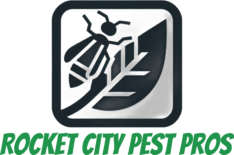In “The Pros and Cons of DIY Pest Control,” you’ll explore both the dazzling advantages and the potential pitfalls of taking pest control into your own hands. You’ll learn how DIY methods can save you money and give you control over what’s used in your home.
However, it will also cover the challenges, such as the effectiveness of your efforts and the time commitment required. This friendly guide aims to provide you with a balanced view, so you can make an informed decision about whether tackling those pesky invaders yourself is truly the best route for you.
Ever found yourself asking, “Is DIY pest control a good idea?” You’re definitely not alone. It’s a common question for homeowners who encounter everything from ants in the kitchen to mice in the attic.
Hiring a professional can be expensive, and the idea of handling the issue yourself can be tempting. But is it worth it? Let’s dive in and explore the pros and cons of DIY pest control to see if it’s the right approach for you.
Understanding DIY Pest Control
Before we get into the pros and cons, it’s crucial to understand what DIY pest control entails. DIY stands for “Do It Yourself,” and in the context of pest control, it means handling pest problems without professional assistance. This can include anything from natural remedies to store-bought pesticides and traps. But is it as straightforward as it sounds?
Types of DIY Pest Control
There are various ways you can approach pest control on your own, and it all depends on the type of pest problem you’re dealing with. Here’s a quick breakdown:
- Natural Remedies: Using household items like vinegar, baking soda, or essential oils to repel or eliminate pests.
- Physical Traps: These include mouse traps, sticky boards, and other physical devices designed to capture pests.
- Chemical Pesticides: Store-bought sprays, powders, and bait stations that contain chemicals to kill or repel pests.
- Preventive Measures: Sealing cracks, removing food sources, and other actions taken to prevent pests from entering your home.
Understanding the different types can help you decide which method or combination of methods might work best for your situation.
The Pros of DIY Pest Control
So, what makes DIY pest control an appealing option? Let’s break down the attractive aspects that make many people consider tackling the job themselves.
Cost-Effective
One of the most significant advantages of DIY pest control is the cost. Professional pest services can be pricey, especially if you need repeated visits. By doing it yourself, you can cut out the labor costs and save a substantial amount of money.
Convenient and Immediate
When you hire a professional, you often have to schedule an appointment, which may not be immediate. With DIY pest control, you can start addressing the problem as soon as you notice it. No waiting around for an exterminator to become available.
Knowledge and Skill Building
Handling your own pest problems can provide you with valuable knowledge and skills. You’ll get to know what types of pests are common in your area and what methods work best to keep them at bay. Over time, you become more adept at handling minor infestations on your own.
Customizable Solutions
With DIY pest control, you have the freedom to choose the methods and products you’re most comfortable with. You can opt for all-natural solutions if you’re concerned about chemicals, or go for more comprehensive methods if you’re dealing with a severe infestation.
Sense of Accomplishment
There’s a certain level of satisfaction that comes from solving a problem yourself. Successfully dealing with a pest issue on your own can be very rewarding.
The Cons of DIY Pest Control
While the pros are tempting, it’s essential to be aware of the downsides. DIY pest control isn’t for everyone, and there are some significant disadvantages to consider.
Time-Consuming
Handling pest control on your own can be a time-consuming task. Identifying the pests, researching the best methods, purchasing supplies, and then actually implementing the solution can take more time than you might expect.
Limited Expertise
Unlike professionals who have years of training and experience, you’re likely to have a limited understanding of pest behavior and effective treatment methods. This can result in inefficient solutions or temporary fixes rather than permanent ones.
Safety Concerns
Using chemical pesticides can be risky if you’re not familiar with how to handle them safely. Misuse can pose hazards to your health, your family, and your pets. Even natural remedies can cause problems if not used correctly.
Potential for Escalation
If not handled properly, a minor pest problem can quickly become a major infestation. Missing the warning signs or not fully eradicating the pests could lead to a situation where professional intervention becomes unavoidable—and even more costly.
Lack of Access to Professional-Grade Products
Professionals often have access to more effective pest control products that aren’t available to the general public. These products tend to be more potent and require less frequent application, which can make them more effective in the long run.
When to Consider Professional Help
DIY can be a great first line of defense, but there are situations where calling in the pros is a smarter move. Let’s look at some scenarios where professional help might be necessary.
Severe Infestations
If you’re dealing with a significant pest problem, DIY methods may not be sufficient. Severe infestations require comprehensive treatments that are best handled by experts who can ensure that every last pest is eliminated.
Hazardous Pests
Certain pests, like termites, bedbugs, or rodents, can pose serious health and structural risks. These require advanced treatment methods and experience, making professional help the safer choice.
Recurring Issues
If you’ve tried DIY methods multiple times and still find yourself facing the same pest issues, it might be time to call in professionals. Persistent problems can indicate underlying issues that need expert diagnosis and treatment.
Time Constraints
Sometimes, your schedule just doesn’t allow the time needed for effective DIY pest control. If you can’t dedicate the effort required, hiring experts ensures that the job gets done right, the first time.

Comparing DIY vs. Professional Pest Control
To help you decide, let’s lay out a comparison between DIY and professional pest control in a simple table.
| Criteria | DIY Pest Control | Professional Pest Control |
|---|---|---|
| Cost | Lower costs, no labor fees | Higher due to labor and expertise |
| Convenience | Start immediately, no waiting | Requires scheduling |
| Expertise | Limited, based on personal research | High, based on training and experience |
| Safety | Risks if misused | Safer handling by experts |
| Effectiveness | Varies, often slower results | Generally more effective and faster |
| Access to Products | Over-the-counter products | Professional-grade products |
| Recurring Issues | May reoccur if not handled properly | Less likely with comprehensive treatment |
| Customization | Tailored to personal preference | Professional assessment for tailored solutions |
| Satisfaction | Sense of accomplishment | Peace of mind and guaranteed results |
Tips for Successful DIY Pest Control
If you decide that DIY pest control is worth a shot, it’s important to follow some tried-and-true tips to maximize your success.
Identify the Pest
Correctly identifying the pest is the first step in effective pest control. Misidentifying the pest can lead to ineffective treatment methods, so take the time to research and confirm what you’re dealing with.
Research Methods
Once you know what pest you’re up against, research the most effective DIY methods for dealing with it. Forums, how-to articles, and instructional videos can be invaluable resources.
Use the Right Products
Choose products that are appropriate for your specific pest problem. Not all pesticides and traps are created equal, so make sure to pick something that specifically targets your pests.
Follow Instructions Carefully
Whether you’re using a natural remedy or a commercial product, always follow the instructions to the letter. Incorrect usage can make the treatment ineffective and could also be hazardous.
Maintain Cleanliness
A clean home is less attractive to pests. Keep food stored properly, take out the trash regularly, and make an effort to keep your living spaces clean and clutter-free.
Monitor for Results
After implementing your DIY solution, keep an eye on the situation. Check to see if the pests are diminishing and whether you need to reapply treatments or take additional steps.
Common DIY Pest Control Methods
To give you a better idea of what you might be dealing with, let’s discuss some common DIY pest control methods for various types of pests.
Ants
- Natural Remedies: Vinegar and essential oils can be effective in deterring ants.
- Physical Traps: Ant bait stations can help lure ants away and eliminate them.
- Chemical Options: Store-bought sprays and powders can help control ant populations.
Rodents
- Natural Remedies: Peppermint oil and cotton balls can be an effective deterrent.
- Physical Traps: Snap traps and live traps can capture and kill or relocate rodents.
- Chemical Options: Rodenticides can be effective but must be used with caution.
Roaches
- Natural Remedies: Baking soda and sugar mix can help kill roaches.
- Physical Traps: Sticky boards can capture roaches as they move around.
- Chemical Options: Roach sprays and baits are widely available and effective.
Spiders
- Natural Remedies: Essential oils like peppermint and lavender can repel spiders.
- Physical Traps: Sticky traps can help catch spiders around the house.
- Chemical Options: Insecticide sprays can effectively control spider populations.
The Importance of Prevention
Regardless of whether you go DIY or hire a professional, prevention is always better than cure. Here are some preventive measures to keep pests at bay.
Home Maintenance
Regularly inspect and maintain your home to close off potential entry points. Sealing cracks and gaps can prevent many pests from gaining access to your living spaces.
Landscaping
Keep your yard tidy to eliminate pest habitats. Trim back bushes and trees that could provide a bridge for pests to enter your home.
Regular Cleaning
Keeping your home clean can go a long way in preventing pests. Frequent vacuuming, dusting, and wiping down surfaces can help deter insects and rodents.
Proper Storage
Store food in airtight containers and keep it in designated areas. Pests are often attracted to easily accessible food sources, so minimizing these can help prevent infestations.
Final Thoughts
So, is DIY pest control a good idea? The answer depends on your specific situation. DIY methods can be cost-effective, convenient, and provide a sense of accomplishment. However, they also come with potential downsides like safety risks, time consumption, and limited effectiveness.
For minor issues, DIY is usually a viable option. But for severe infestations or hazardous pests, professional help is often the best course of action. Either way, a proactive approach to pest prevention can save you a lot of trouble down the line.
We hope this guide gives you a clearer picture of the pros and cons of DIY pest control and helps you make an informed decision that’s right for you. Happy pest controlling!

